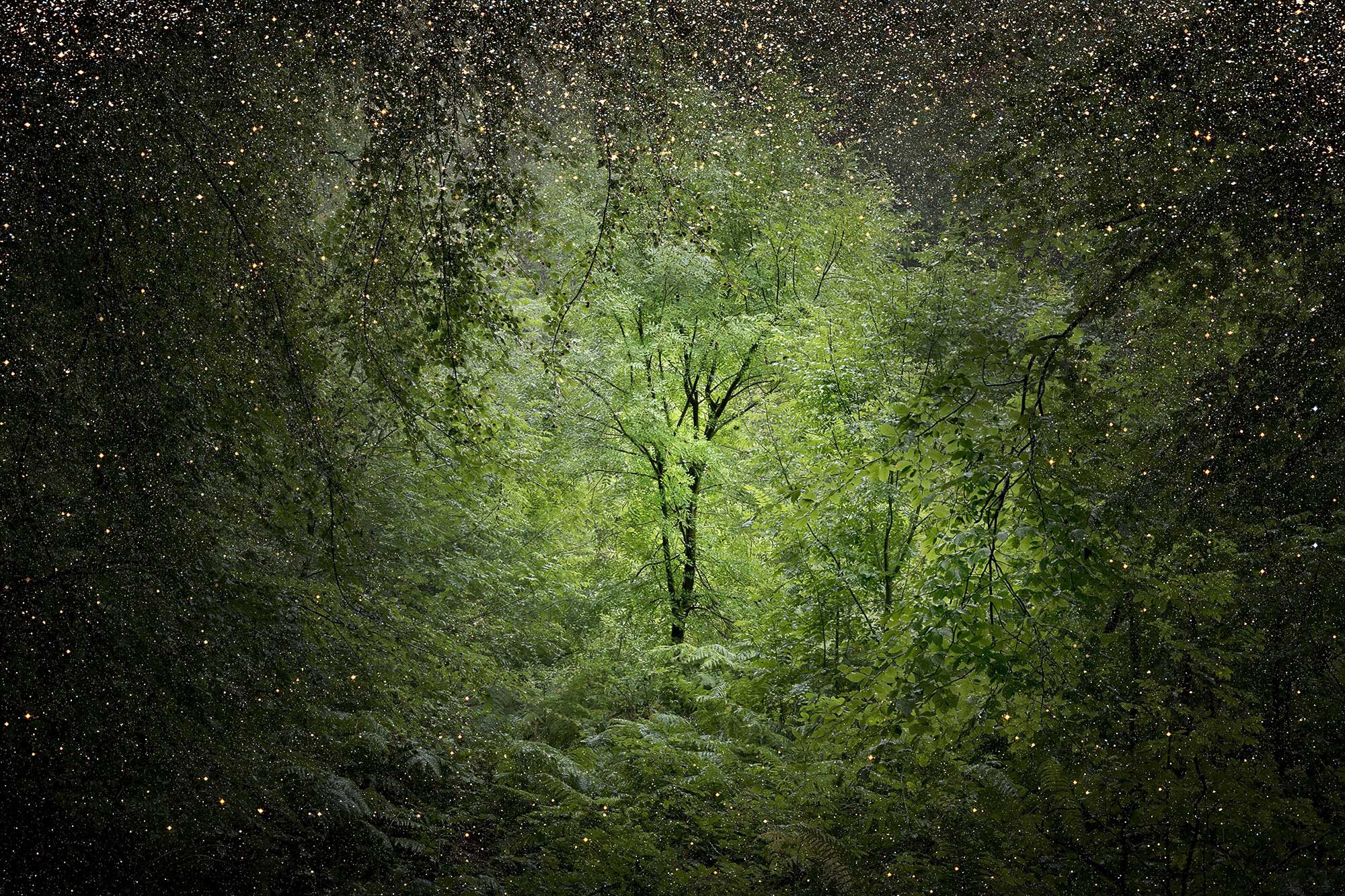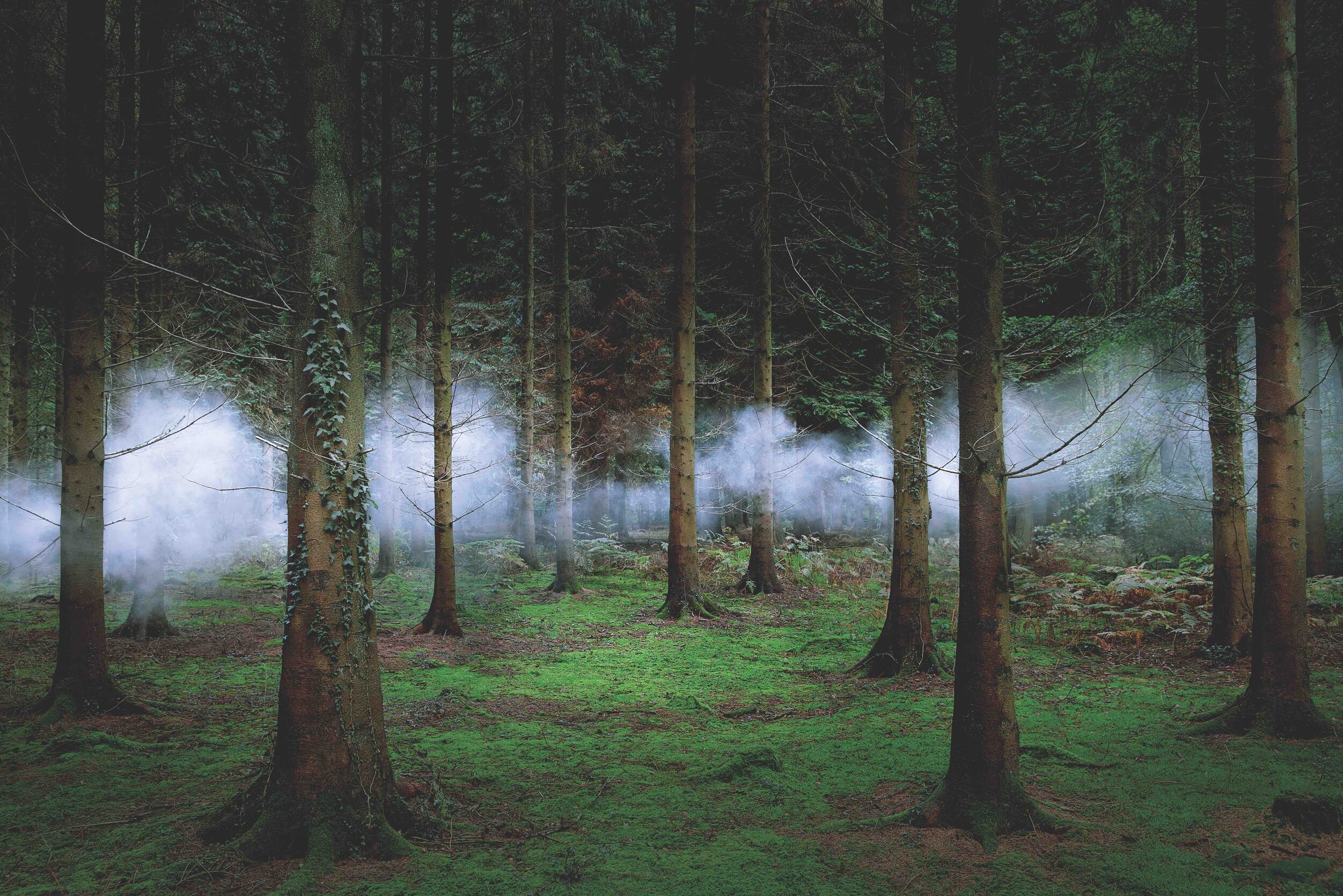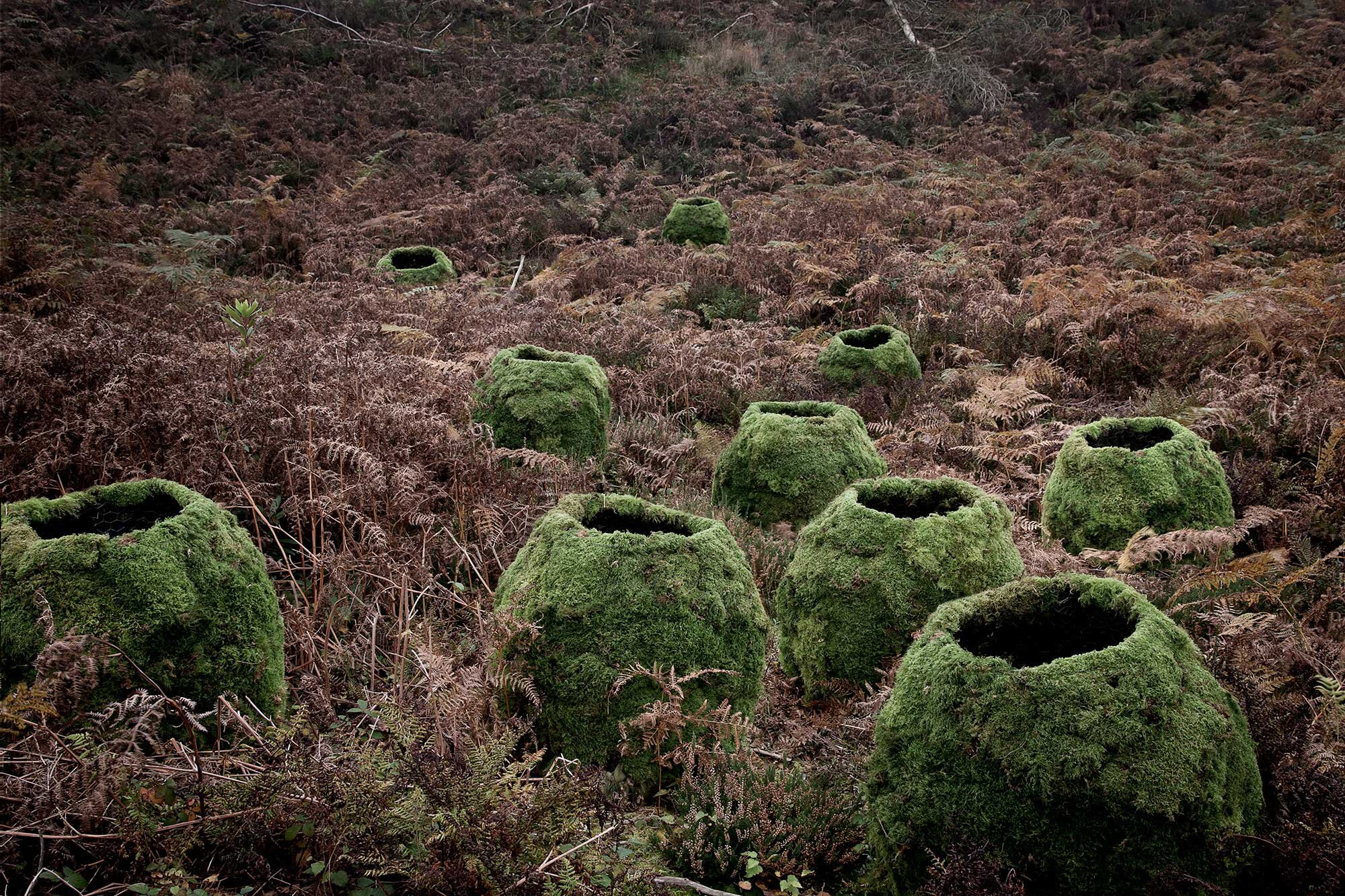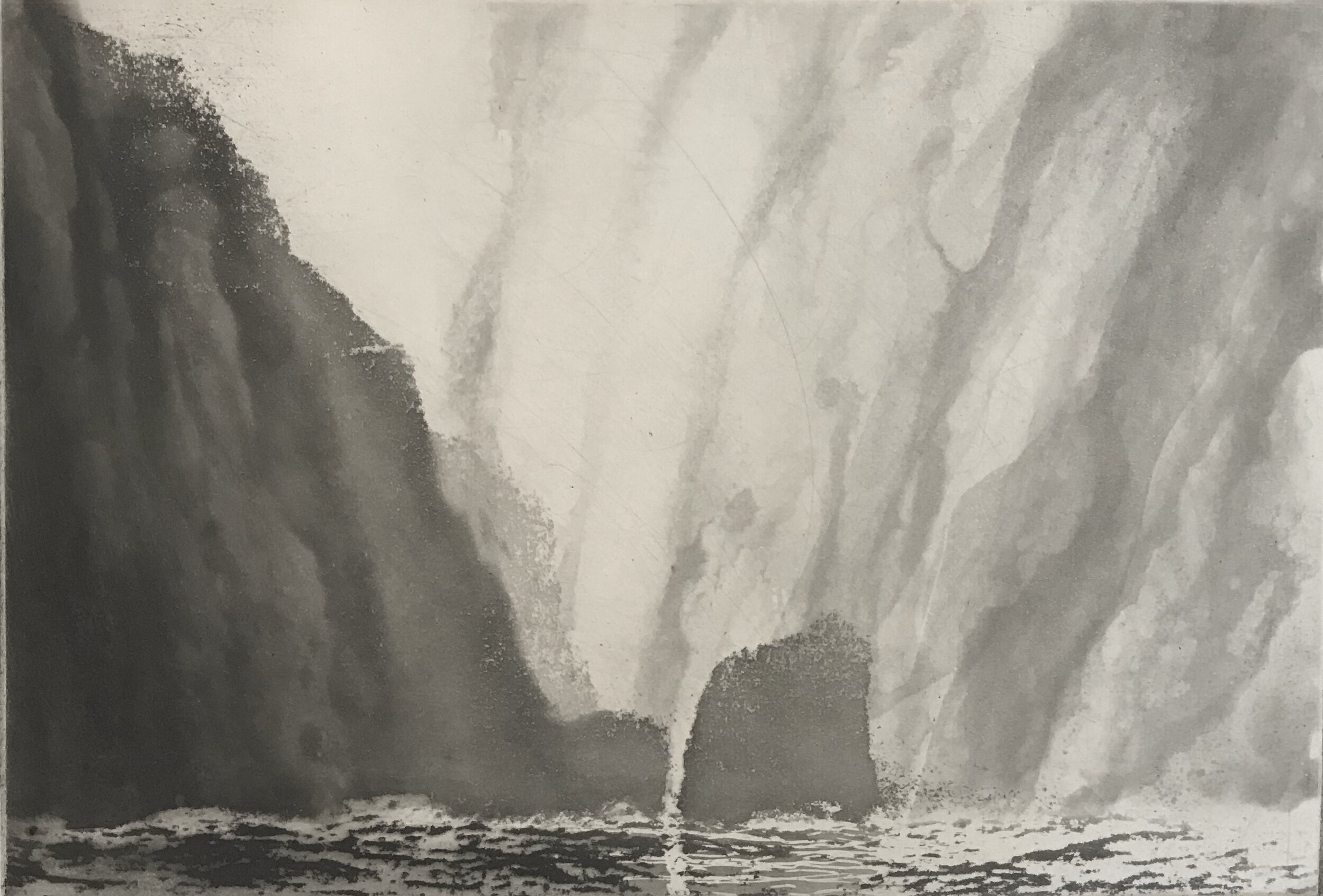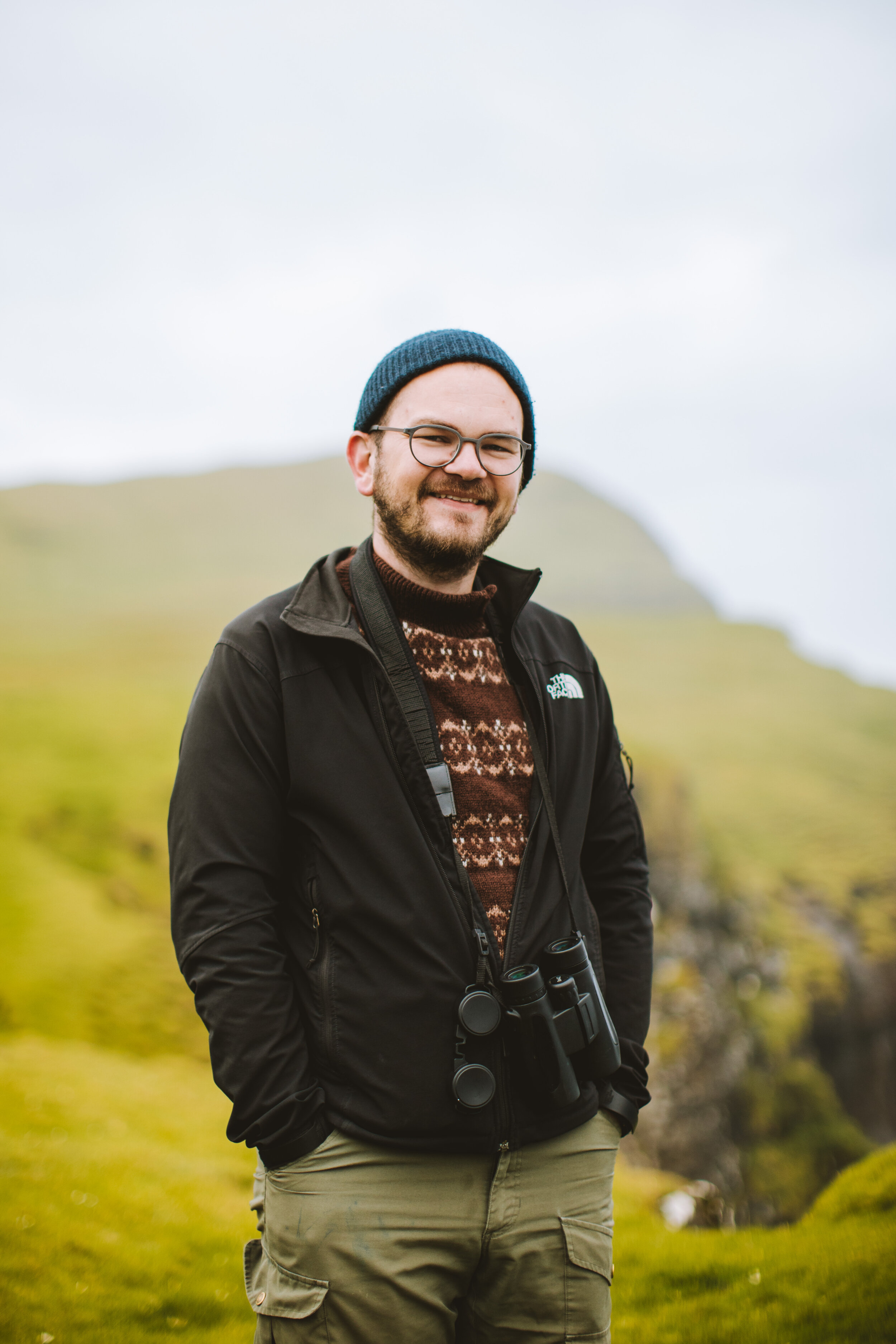Photographer Ellie Davies’ work explores the fabricated nature of landscape by making a variety of temporary, non-invasive interventions in the forest, placing the viewer in the gap between fantasy and reality. Her small interruptions have involved building structures out of found materials, creating pools of light on the forest floor and introducing starscapes taken by the Hubble Space Telescope. Ellie tells us more about her spellbinding images...
Stars 8, and all images below, by Ellie Davies
I LOVE THE RANGE OF RESPONSES MY WORK GETS. Some find it really uplifting, others find it dark and sinister. I think that says more about the viewer than it does about the work. While the images explore my own experiences of the woods – and I have a very positive relationship with woodland – the forest is a place that can bring different levels of unease. You often see this played out in the way forests are portrayed in storytelling and mythology.
I THINK THIS HISTORICAL PORTRAYAL OF WOODLAND IN STORYTELLING came about when communities were living in tiny settlements within predominantly wooded landscapes, and to stray beyond the boundaries was potentially dangerous. Since then, woodlands have become an emotive metaphor for all sorts of other things, relating to the subconscious, and these get woven into stories that can really ignite the imagination.
I GREW UP IN THE NEW FOREST AND SPENT MOST OF MY CHILDHOOD PLAYING IN THE WOODS WITH MY TWIN SISTER. You need that in childhood. I think children’s memories of woodland are so vivid because these experiences are often their very first explorations and adventures, and this plays such an important part in children working out who they are and gaining self confidence.
IN THE NEW FOREST YOU FIND WONDERFULLY MATURE, ANCIENT WOODS FILLED WITH BEECH AND OAK. I get such a different feeling in these woods, compared with being in a pine plantation. This is often the starting point of a series – thinking about the atmosphere a particular area has, the colour palette, the composition of the space, and age and character of the trees.
AFTER MY SON’S BIRTH, I had a period of time where everything felt different. This was probably due to postnatal depression. I wanted to make new work and I missed being out in the woods all day, but I think as a new mum it’s hard to find the headspace to develop ideas, especially to execute them. I realised that I just had to trust in the process and let things take their course. During that year I made Another Green World, and when I look back at those images I think ‘God, what was I doing?’. I kind of love them but they’re not like anything else I’ve made. They’re strange, alien creatures. At the time I was feeling a bit like that about motherhood. Of course I loved my son enormously, but nothing about motherhood was how I expected – it was all just alien. I suppose these things come out in my work and I can’t see it clearly until I look back later.
I LOVE DOING WHAT I DO, ESSENTIALLY GOING TO THE WOODS TO PLAY. My Between the Trees series was the most fun but also the most challenging to make. These images explore the nature and meaning of ‘forest’ by considering the experience of standing alone in the woods: the eerie sensation that time has slowed down, and that the forest and everything within it exists in a different state. I used smoke to fill the space between the trees, but I won’t tell you how I did it. It was a chaotic process and I probably looked very silly while I was doing it.
I’VE ALWAYS WANTED MY WORK TO BE SCULPTURAL AND HANDMADE; to make sure everything in the image was actually there in the woods, albeit temporarily.The Stars series was a departure from that. The idea first came to me when I was riding an escalator out of a London tube station at night – there was a display of lightbulbs in the window reflecting on the glass of the escalator.These amazing little flares of light against the black background looked like a starscape. I started to think about how I could recreate that photographically. I experimented with things like pricking holes in fabric and light shining through, but nothing quite worked. Then I realised that as it was stars I was trying to create, I should work with the real thing. I came across the Hubble Space Telescope images on the NASA website and I asked their permission to use them in my images. While Stars was an interesting departure, I don’t want to overuse Photoshop. I still feel that a big part of my work is the sculptural, handmade element.
FIRES WAS MY PROJECT LAST YEAR. Fire links modern man to the earliest inhabitants of Britain’s forests. With symbolic narratives spanning the human and natural world, it brings together the opposing themes of life and death, creation and destruction, love and loss, nature versus culture, and numerous other meanings we ascribe to it. The small fires present in my images cast the forest in a warm light, holding back the dark, bringing a sense of safety and comfort, temporarily altering it. A man-made fire must be built and lit, tended and fed. Its mere presence implies the existence of people and the human narrative remains despite their absence in the image. The viewer is invited to weave their own experience into the woodland, to sit down, be silent and still, and become a part of it.
I WORK WITH A SMALL CAMERA KIT – a Pentax 645Z, two lenses and a tripod. I can carry everything on my back or on my bike, and I’m free to walk or cycle wherever I want to go. In the past I’ve considered expanding my production – using lighting, assistants and bigger setups but in the end, I just love being on my own in the woods. A lot of it is trying to find that quiet connection – walking slowly, looking for specific places or ideas, or just waiting for inspiration to come.



